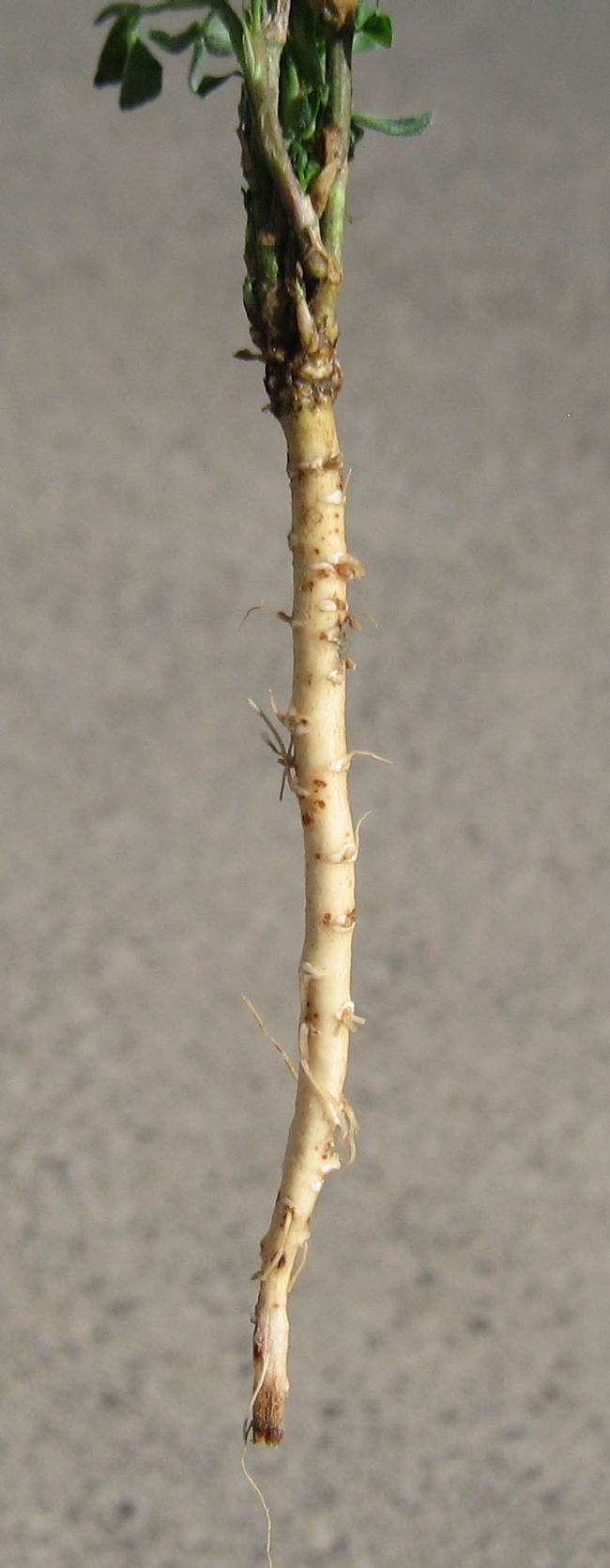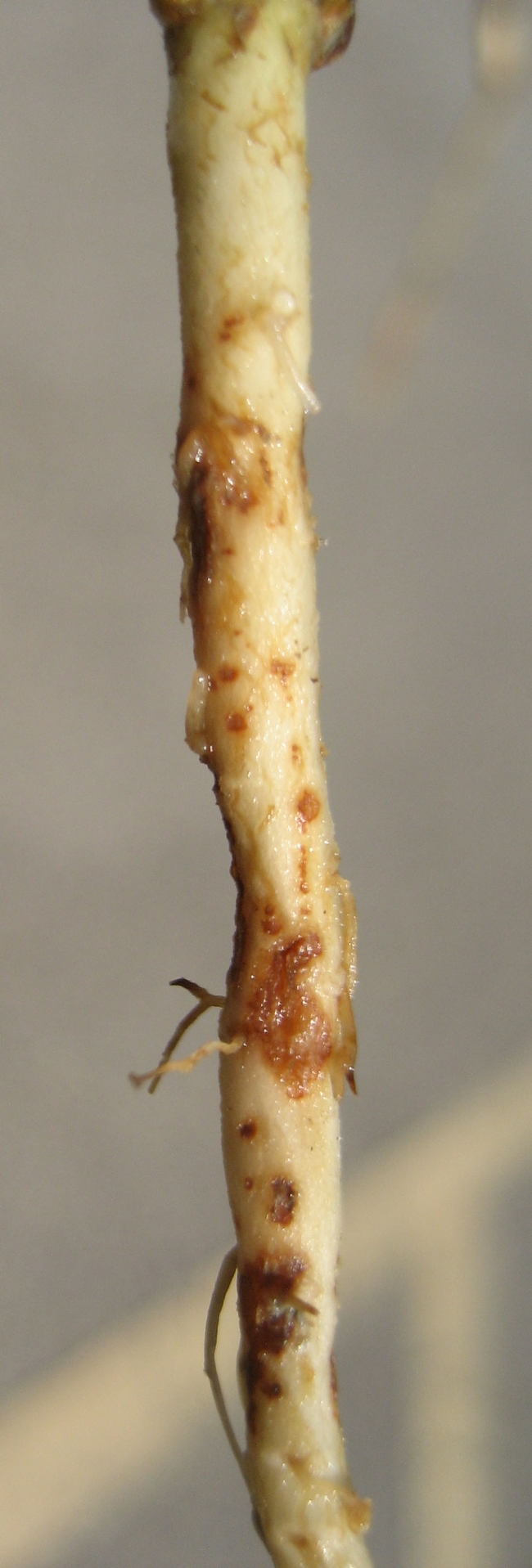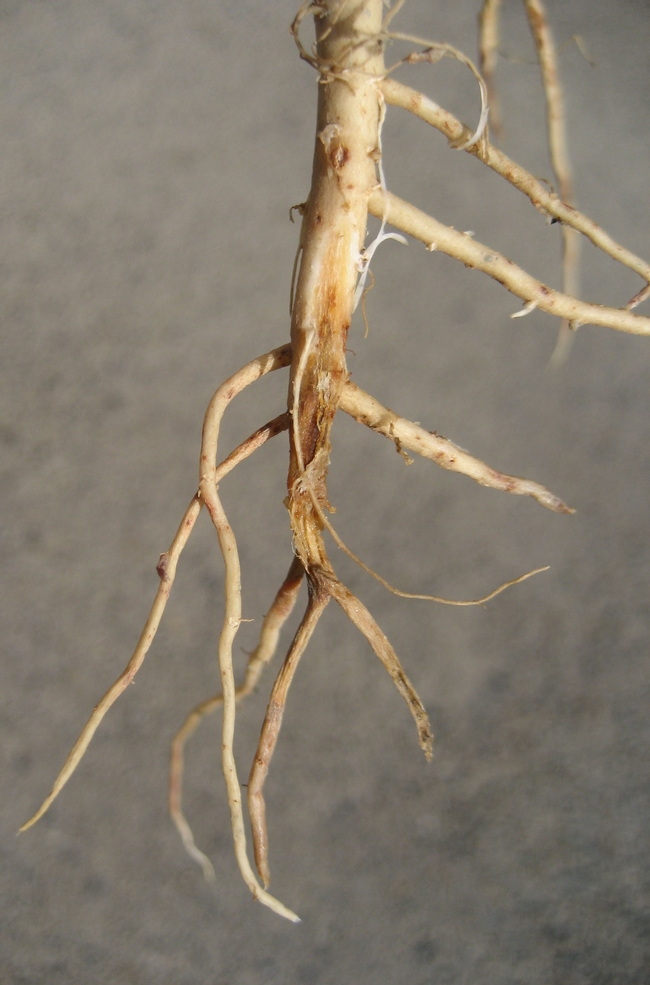Many of us think about too much water killing alfalfa during the hot days of summer. And this does happen, especially at the tail end of fields where water may collect and stand for hours after the irrigation has ended. When temperatures are over 100 oF and the soil is saturated for extended periods, roots can essentially suffocate due to lack of oxygen. Plants die very quickly and roots begin to disintegrate. Because the root zone is usually saturated from the soil surface for a depth of several inches or even feet, the entire root rots. This situation is referred to as “scald” and is a physiological process rather than a pathology process.
There is another situation where saturated soil leads to dead alfalfa but in this case a fungus, called Phytophthora megasperma f. sp. medicaginis, is involved. This soil-inhabiting fungus requires saturated soil conditions for infection to occur. Infected plants are most likely to be found in fields with clay soils, soils with poor drainage, long irrigation sets, or when any condition causes water to stand in the soil for a long time. Sometimes the saturated soil condition is not obvious – the soil surface may be dry but, some distance below the surface, soil can be saturated due to soil type (heavy clay) or an impediment to drainage such as a hardpan. Because the disease requires saturated soils, Phytophthora-infected plants are often located at the tail end of a field but they can be found anywhere in a field when the right conditions occur.
While the “scald” mentioned in the first paragraph is only found in the high heat of summer, the optimum soil temperatures for infection by Phytophthora are 75-82 oF. It is in the spring months (late March – May) that I have seen the highest levels of Phytophthora root rot. This past April I saw a field with infected plants throughout the field. It was planted this past winter and the foliage was 6 to 12 inches high. Ten to fourteen days before I saw it, the field was flood irrigated. The heavy clay soil took water like a sponge – possibly a reflection of how dry the soil was due to the lack of rain this winter. I could easily walk on the field but about 4-5 inches below the surface the soil was essentially mud.
Above ground, the plants on the levees were a nice green and had no symptoms (which is often the case when wet soil is contributing to alfalfa root problems). Between the borders, plants with tan-colored, dried leaves were scattered throughout the check, although they were more prevalent at the tail end. Many plants were dead. Beneath the soil surface, the portions of the roots that were in the upper part of the soil, where the soil was not saturated, appeared healthy (Photo 1) or at worst had small brown sunken spots (lesions) scattered on the roots (Photo 2). Lower on the roots, where they were in contact with saturated soil, root tissue had died and was rotting. On some infected plants, larger-than-normal lateral roots had developed on the healthy portion of the root above the rot (Photo 3). Often laterals like these can compensate for the loss of the tap root but they will never grow vertically and as deep into the soil as a healthy tap root. The result is a compromised root system and reduced production in summer because these plants can’t use water from lower in the soil profile when irrigations can't keep up with crop requirements or are delayed due to harvest operations.

